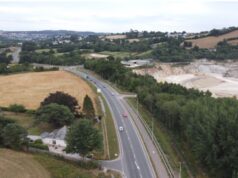By some estimates, eight out of 10 cars sold in Australia will be electric by 2030. But all those cars need somewhere to charge, whether it’s at home or a public charging station. The question is whether Australia’s electricity grids have the capacity to cope with this influx of battery electric vehicles (BEVs), or will significant investment be required to meet demand?
According to the Australian Energy Regulator, in the 12 months to 2022 Australia’s net energy demand across the National Electricity Market (NEM) was approximately 61 per cent of the country’s annual net electricity capacity. This level of demand doesn’t ring alarm bells, as it simply means Australia has enough electricity to satisfy its current needs. However, this is set to change dramatically within the next decade, with 80 per cent of new vehicle sales in Australia expected to be electric by the year 2030.
Modelling by Transgrid shows how significant the extra demand will be. In a current trend scenario, it shows NEM consumption will surge 40 per cent by 2050, primarily due to the electrification of vehicles, adding approximately 48 TWh (terawatt hours) of annual demand to Australia’s electricity grids.
Consequently, real concerns are growing among industry and consumer groups that Australia won’t be able to cope – and there’s some compelling research that shows these fears are warranted.
Most of these studies centre around the central problem of EV charging. It takes a lot of electricity to charge a standard EV – something in the ballpark of 6-8 kWh (kilowatt hours) for a standard 40 kilometre trip, or the equivalent of a small household’s daily energy needs. Australia’s public charging infrastructure is sorely inadequate for its future requirements, meaning most EV owners will be charging their vehicles at home.
Estimates by the Reliable Affordable Clean Energy for 2030 Cooperative Research Centre (RACE for 2030 CRC) show that if Australian EV owners in 2030 charge at different times during the day, the electricity grids should be able to cope, adding just a 3-4 per cent increase in daily demand, but if they charge according to the current demand profile, which has maximum load aligned with the peak demand time of 6pm-7pm, then demand will double.
Unsurprisingly, this could cause big problems for Australia’s energy grids. In an article for The Conversation, titled Australia’s electricity grid can easily support electric cars – if we get smart, University of Melbourne Associate Professor of Engineering Marcus Brazil points to negative effects on the grid, including voltage drops, phase unbalance and significant loss of efficiency in the networks, if doubled demand were to happen.
In a worst-case scenario, he says, it could lead to “network failures, or component overload where assets such as distribution transformers and the utility lines run beyond their nominal current ratings and capacity limits, substantially shortening their lifetimes”.
The reality is that if the uptake of EVs hits the predicted level of 90 per cent of car sales by 2030, then Australia needs to find charging infrastructure solutions.
How can Australia future proof our energy grids?
Nathaniel Galindo, General Manager, Operations and Engineering – Microgrid Power, at The Green Guys Group, agrees that Australia needs more investment in charging infrastructure, but he says that charging infrastructure also needs systems control, regulation and vehicle-to-grid integration (V2G).
“We need to develop the electrical charging infrastructure on the network itself, that encompasses investment and development of 7kW and fast charging stations and develop standardisation and regulatory framework for that. But we also need systems control of charging – to manage peak demand on a global grid scale,” he says.
According to the Electric Vehicle Council in 2021, Australia had just 450 public fast chargers and 2530 standard chargers. But RACE for 2030 predicts we will need one charger at every home with an EV; at least one for every multi-unit dwelling; roughly 200,000 at Aussie workplaces; and an extra 15,000 public fast chargers by 2030.
V2G describes the systems EVs will use to communicate with the electricity grid – to ensure maximum energy efficiency. “For example, we need to determine how they will connect to transportation infrastructure, buildings or renewable energy sources,” says Galindo.
Once we’ve got all those elements, the last critical part is the orchestration of all those loads and assets, and attaining the ability to operate in a two-way bidirectional mode, says Galindo.
“That Distributed Energy Resource Orchestration plan is the real critical part for accelerating EV adoption, because not only will it reduce the amount of infrastructure required on the grid, but it’ll also utilise more renewables and support grid stability and the cost associated with the deployment. This will ensure we have long-term sustainability in our infrastructure for EVs into the future,” he says.














